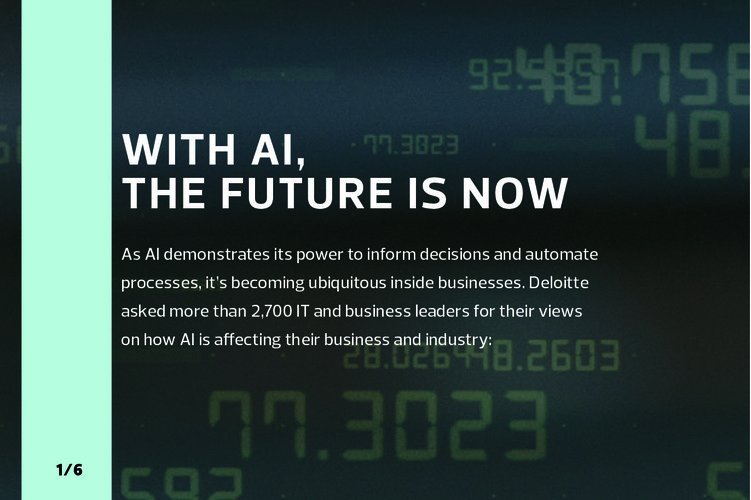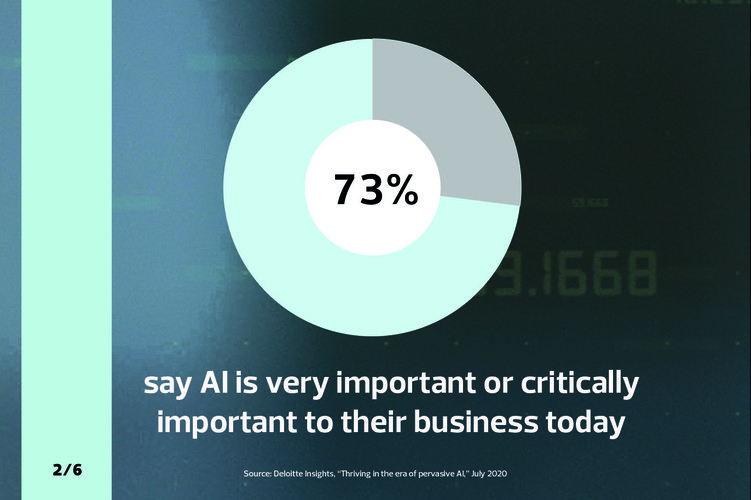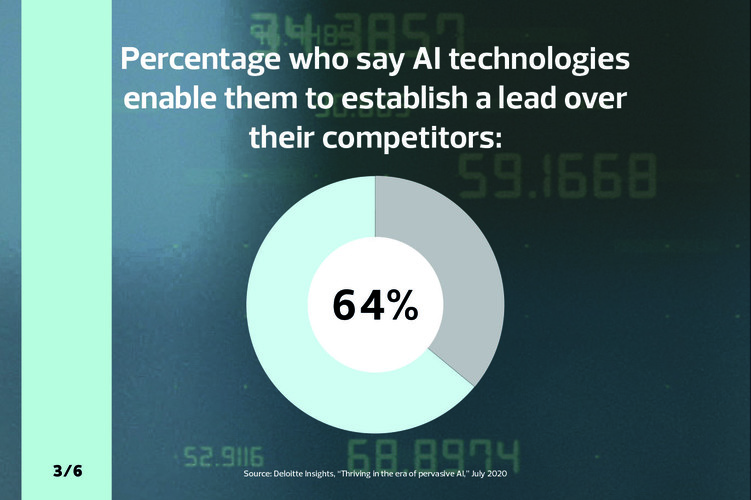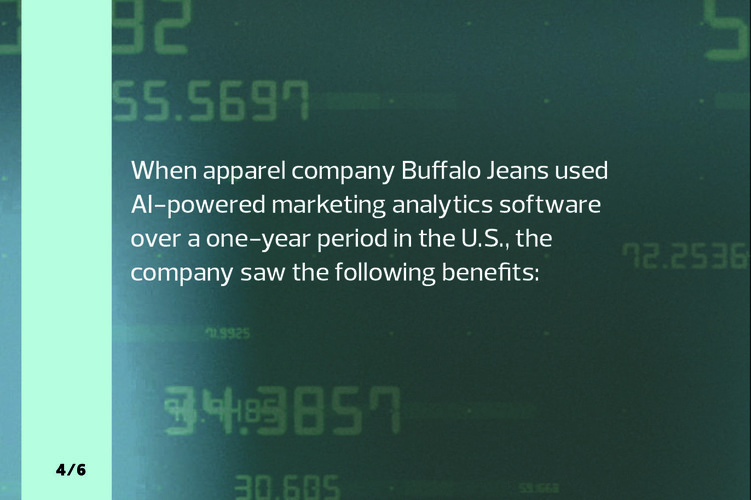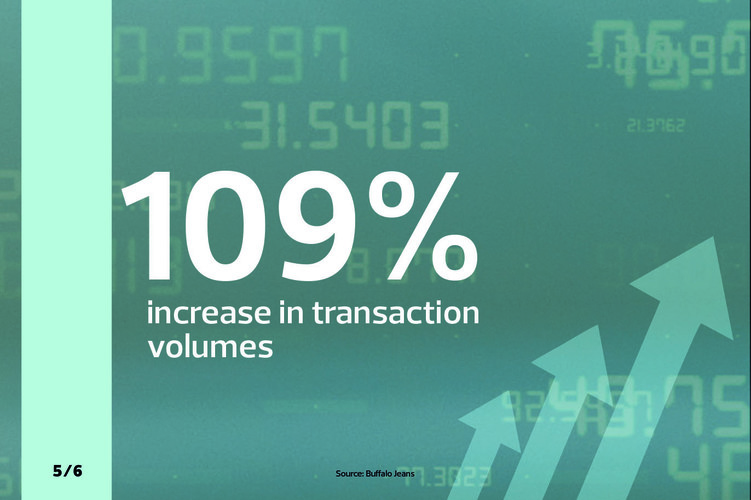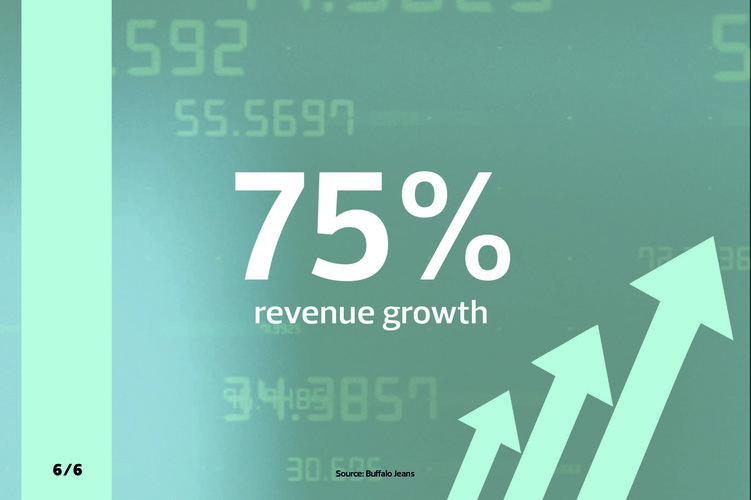TransUnion, a global information and insights company, processes more than 1,000 transactions per second, and Chief Information and Technology Officer Abhi Dhar says that each and every one is important.
TransUnion’s business customers rely on it for instant access to information that allows them to make immediate financing decisions. And consumers need and deserve fast answers, Dhar says. That’s why he’s using machine learning to bolster TransUnion’s IT uptime.
Machine learning, a subset of artificial intelligence, allows the company’s IT team to predict problems in advance, so they can proactively resolve issues before outages occur.
“We have to be highly available for our consumers and business customers,” Dhar says. “Anytime anyone wants to make a risk decision in the biggest banks and biggest insurance companies in the world, we have to be able to answer that question very quickly.”
AI is a hot topic in IT these days, but often it’s just a baked-in feature that makes software more effective without businesses having to do anything. Now, many businesses are taking advantage of AI platforms and solutions more intentionally to change how they engage with their customers and employees.
The technology quickly processes and analyzes enormous volumes of data, allowing organizations to keep business operations running smoothly, for example.
WATCH: Learn how to move ahead with the new workplace dynamic.
It can also help companies better understand their customer preferences, which in turn lets them personalize marketing offers to boost revenue. And some businesses are taking advantage of automated AI-powered chatbots to improve customer service or help employees become more productive.
“There are so many ways AI can help businesses,” says Bob O’Donnell, president of TECHnalysis Research. “At the end of the day, it’s advanced analytics: AI is proving to be good at finding patterns and translating that into something you can turn into meaningful action.”
Businesses Can Serve Customers Faster with ML
When Dhar joined TransUnion 18 months ago, his priority was to improve uptime. One of the key enablers, besides the traditional disciplined IT processes, was to apply machine learning to predictively achieve that outcome, he says.
It’s a huge undertaking because TransUnion operates in more than 30 countries and aggregates information on 1.2 billion consumers from 100,000 data sources. But the company, whose business customers include financial institutions, auto insurance carriers and healthcare providers, has made strides.
Splunk software is part of TransUnion’s strategy. In 2013, the company began implementing Splunk’s core enterprise software to monitor and analyze the health of its applications, IT infrastructure and networks across its data centers worldwide.
Today, the Splunk tool centralizes and correlates log data and uses machine learning to provide real-time visibility into its applications and infrastructure, says Ed Bailey, TransUnion’s senior monitoring and operations architect.
In the past year and a half, TransUnion’s IT staff has collaborated with its data science team to develop advanced machine learning algorithms to spot performance issues and predict outages, allowing the IT team to troubleshoot and remediate before downtime occurs.
They used Machine Learning Toolkit from Splunk to develop the models, and over time they’ve gone from predicting outages one hour in advance to six hours in advance.
“We are using hundreds of millions of events as a training data set to look for minute fluctuations in application and systems health, and when the model sees those fluctuations, we can alert the appropriate teams,” Bailey says. “Instead of having a full-blown outage, we can take action much earlier, so it becomes a business-as-usual exercise instead of a fire drill.”
It’s a highly predictive model that can even tell IT administrators what days of the week and during which hours the company is most likely to encounter a problem, Dhar says. TransUnion has successfully implemented it in some business systems and is currently rolling it out across the enterprise, he says.
How Machine Learning Can Power Smarter Marketing
While AI is a powerful ally for ensuring continuity in IT operations, its analytical power can be harnessed to inform decision-making within every part of a business. Recognizing the potential, TransUnion is expanding its AI program beyond outages — building machine learning algorithms to deliver more business and operational insight to every business unit. “Anywhere we can bring value, we are looking to do it,” Dhar says.
Smaller companies are taking advantage of AI too. Apparel manufacturer Buffalo Jeans wanted to boost its online sales, so in 2016, it deployed several AI-powered IBM marketing applications to better understand its customers and send more relevant, highly targeted email marketing offers to them.
The technology has improved customer engagement and increased online revenue. In fact, when brick-and-mortar stores that carry Buffalo Jeans’ clothing line had to shut their doors this spring due to the coronavirus pandemic, the company augmented its email marketing efforts and increased online sales 30 percent year over year, says Stephen White, Buffalo Jeans’ vice president of business process and operations.
The company uses several cloud-based applications powered by Watson, IBM’s well-known AI platform. Buffalo Jeans integrated the tools with its sales and customer data.
The AI tools help Buffalo Jeans analyze customer behavior and sales patterns. Through analytics, it has learned to better target discounts toward merchandise that’s moving less quickly, so it can maintain strong profit margins on top-selling items, White says.
The company also uses the tools to segment customers based on purchase history, demographics and even what time they open their emails. That way, they can better target customers with personalized promotions and send them to their email inboxes when they are most likely to open them. That’s how Buffalo Jeans increased e-commerce sales this spring, he says.
“We didn’t invest in any external online marketing,” White says. “Our e-commerce teams took our email marketing campaigns to another level by segmenting better and being smarter with our existing tools.”
The company also uses IBM Watson to detect customer problems while they shop online. If customers leave the site abruptly, Buffalo Jeans’ employees can investigate the reasons.
“If we see recurring problems, like a constant error code on a certain page, we can fix them before they become real big problems,” White says.
How Artificial Intelligence Streamlines Client Care
The New York Foundling, a child welfare and social services agency, uses Microsoft Azure AI-powered chatbot technology to streamline client service data entry and other administrative tasks, resulting in more efficient processes and productive employees, explains CIO Arik Hill.
The Azure Bot Service uses natural language processing to help employees document social services care delivery. In the past, employees had to spend hours every week catching up with documentation after hours.
Now, they can pull up the secure Microsoft Teams app on their smartphones, and through a text-based chat, the bot will guide them through the data-entry process.
As one of New York’s longest serving nonprofit organizations, The Foundling is people-centered and data-driven, Hill says. With that mindset, it reduced the process of finding and recording client care, from about 70 clicks to seven clicks. Service entry documentation that used to take up to 15 minutes to create now takes just a few seconds, Hill says.
“We don’t want to spend our time doing administrative work after hours,” he says. “We want to spend all our time providing proven, practical and wide-ranging client services.”





